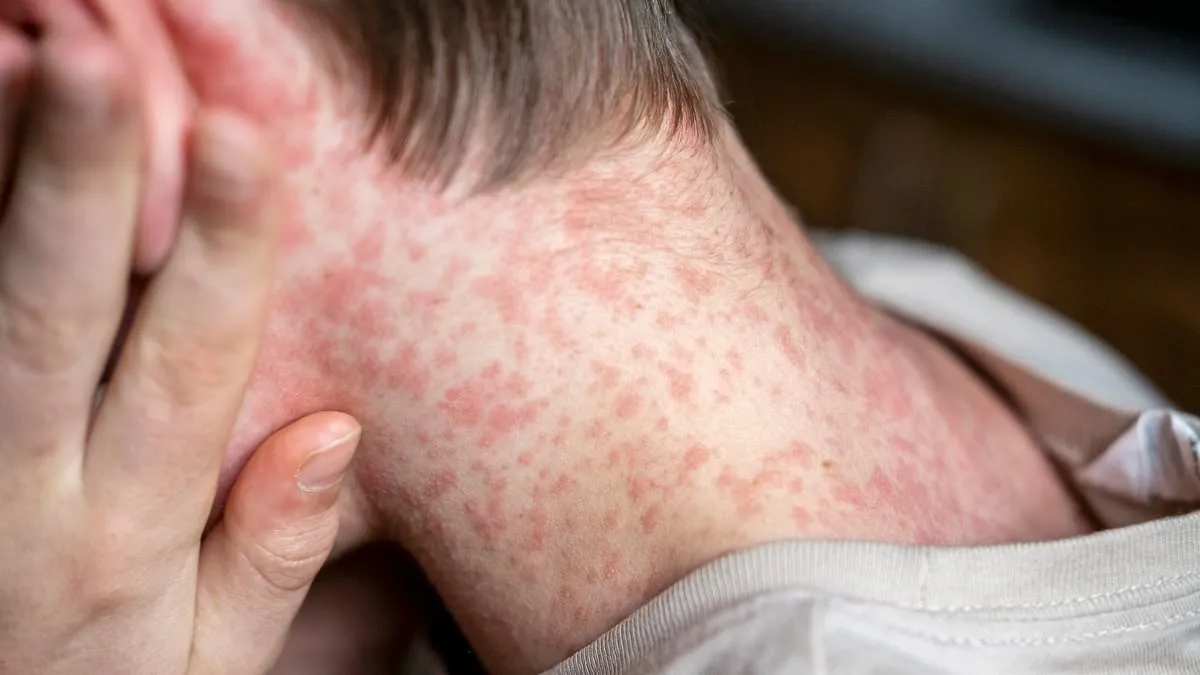
Experts are sounding the alarm over a significant national decline in the measles-mumps-rubella (MMR) vaccination rates among children in the United States. As cases of these infectious diseases continue to surge, a recent study highlighted a concerning trend: vaccination uptake has fallen in eight out of ten US counties over the past year. Overall, the nation witnessed a three percent drop in vaccination rates, with only 91 percent of children now vaccinated against measles. This figure is alarmingly below the 95 percent threshold necessary to prevent outbreaks and protect the population.
Researchers from Johns Hopkins University have issued a stern warning: if vaccination rates continue to decline, measles could make a full comeback, potentially becoming a common infection in the US. As of last week, the country reported over 1,000 confirmed measles cases and at least three deaths—the first fatalities attributed to measles in a decade. Disturbingly, the majority of those infected and all reported deaths were among individuals who had not received their MMR vaccine, primarily due to vaccine hesitancy and widespread misinformation.
Without the MMR vaccine, which boasts a remarkable 97 percent effectiveness in preventing infections, measles remains one of the most contagious diseases globally. Symptoms include tiny white spots inside the mouth and flat red spots on the neck, torso, arms, legs, and feet. The disease can lead to severe complications such as ear infections and high fevers. Health experts emphasize the importance of vaccination timing: children should receive two doses of the MMR vaccine, with the first dose administered between 12 and 15 months of age, and the second dose between 4 and 6 years of age. Additionally, babies aged 6 to 11 months should receive an early dose if traveling internationally, and adults should verify their immunity status.
The study conducted by Johns Hopkins researchers examined MMR vaccination data for kindergarteners (children aged five) across 2,066 counties in 38 states, spanning the school years from 2017-2018 to 2023-2024. The data revealed that a staggering 78 percent of these counties—1,614 in total—reported declines in MMR vaccination rates. The average county-level vaccination rate decreased from 93.92 percent before the COVID-19 pandemic to 91.26 percent post-pandemic. Notably, only four of the 33 states analyzed—California, Connecticut, Maine, and New York—reported an increase in vaccination uptake.
Lauren Gardner, senior author and director of the Center for Systems Science and Engineering at Johns Hopkins University, stated, "This open, high-resolution dataset provides a critical resource to explore and better understand the country's vaccination landscape and its implications for the risk of measles spread." The current year has seen the highest number of measles cases reported in over three decades, with the majority occurring in unvaccinated children. This alarming trend poses a severe threat to public health.
Measles is exceptionally contagious; if one person is infected, up to 90 percent of those nearby who are not immune may also contract the disease. An infected individual can spread the virus to an average of 18 other people if they are unvaccinated. In comparison, individuals infected with the original COVID-19 strain typically transmitted the virus to just two others, a number that increased significantly with new variants. Among unvaccinated individuals, approximately one in five infections result in hospitalization, while one in 20 children may develop pneumonia.
The last significant measles outbreak in the US occurred in 2019, with 1,274 cases reported throughout the year. Prior to that, the most substantial outbreak took place in 1990, with over 27,000 cases documented. Currently, states experiencing outbreaks include Arizona, California, Florida, Georgia, Illinois, New York, and several others. Shockingly, three-quarters of the reported cases involve children under 19 years of age. Measles was officially declared eradicated in the US in 2000, thanks to an effective vaccination campaign, making the current resurgence even more concerning.